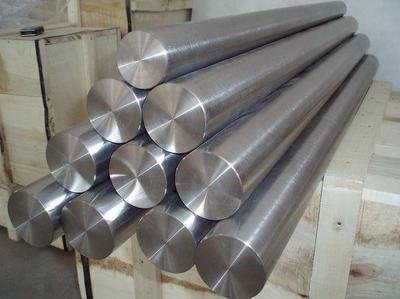Zr2 zirconium rod, a remarkable material with unique properties, has long piqued the interest of various industries, including the aerospace sector. As a reliable supplier of Zr2 zirconium rod, I've witnessed firsthand the growing curiosity about its potential use in aerospace applications. In this blog post, we'll delve into the characteristics of Zr2 zirconium rod and explore whether it can indeed find a place in the demanding aerospace industry.
Properties of Zr2 Zirconium Rod
Zr2 zirconium rod is known for its exceptional corrosion resistance, especially in environments containing acids, alkalis, and salt solutions. This is due to the formation of a thin, protective oxide layer on its surface, which prevents further oxidation and corrosion. In addition to its corrosion resistance, Zr2 zirconium rod also exhibits good mechanical properties, such as high strength and ductility. These properties make it suitable for a wide range of applications where durability and reliability are crucial.
Another important property of Zr2 zirconium rod is its low neutron absorption cross - section. This characteristic makes it an ideal material for use in nuclear applications, as it allows neutrons to pass through with minimal interaction. In the aerospace industry, this property could potentially be beneficial in certain components where radiation shielding or neutron - related considerations are important.
Demands of the Aerospace Industry
The aerospace industry has extremely high requirements for materials. Components used in aircraft and spacecraft must withstand a wide range of harsh conditions, including high temperatures, extreme pressures, and rapid temperature changes. They also need to be lightweight to improve fuel efficiency and reduce overall vehicle weight.
For example, in jet engines, materials need to be able to maintain their strength and integrity at temperatures exceeding 1000°C. In the fuselage and wings, materials must be strong enough to withstand aerodynamic forces during flight, while also being light enough to keep the aircraft's weight down. Additionally, aerospace materials need to have excellent fatigue resistance, as they are subjected to repeated stress cycles over their operational lifespan.
Can Zr2 Zirconium Rod Meet Aerospace Demands?
Temperature Resistance
Zr2 zirconium rod has a relatively high melting point, around 1852°C. This means that it can potentially withstand high - temperature environments in the aerospace industry. However, its high - temperature strength and creep resistance need to be carefully evaluated. Creep is the tendency of a material to deform slowly under a constant load at high temperatures. In aerospace applications, such as in engine components, any deformation due to creep can lead to serious performance issues or even component failure.
Lightweight Requirement
Zirconium has a density of about 6.51 g/cm³, which is higher than some lightweight metals commonly used in aerospace, such as aluminum (density about 2.7 g/cm³) and titanium (density about 4.5 g/cm³). While Zr2 zirconium rod may not be the first choice for applications where weight is the primary concern, it could still be used in components where its other properties, such as corrosion resistance and mechanical strength, outweigh the weight disadvantage.
Corrosion and Fatigue Resistance
As mentioned earlier, Zr2 zirconium rod has excellent corrosion resistance. In aerospace applications, components are often exposed to various corrosive substances, such as moisture, oxygen, and chemicals in the atmosphere. The corrosion resistance of Zr2 zirconium rod can help extend the service life of these components. Regarding fatigue resistance, zirconium alloys, including Zr2, generally have good fatigue properties. This is important in aerospace structures that are subjected to cyclic loading during flight.
Potential Applications in the Aerospace Industry
Structural Components
Although its density is relatively high, Zr2 zirconium rod could be used in certain structural components where its mechanical strength and corrosion resistance are more important than weight. For example, in some parts of the landing gear or in components that are in contact with corrosive fluids, Zr2 zirconium rod could provide a reliable solution.
Nuclear - Related Aerospace Applications
As mentioned, the low neutron absorption cross - section of Zr2 zirconium rod makes it suitable for potential use in aerospace applications related to nuclear power or radiation shielding. For instance, in future space missions that may involve nuclear - powered propulsion systems, Zr2 zirconium rod could be used in components that require neutron - related performance.
Comparison with Other Zirconium Rods
When considering Zr2 zirconium rod for aerospace applications, it's also useful to compare it with other zirconium rods, such as Zr5 Zirconium rod and Zr3 Zirconium Rod. Each type of zirconium rod has its own unique set of properties.


Zr5 zirconium rod may have different chemical compositions and mechanical properties compared to Zr2. It could potentially offer better high - temperature performance or different corrosion resistance characteristics, depending on its specific alloying elements. Similarly, Zr3 Zirconium Rod may have its own advantages and disadvantages in the context of aerospace applications. The choice between these different zirconium rods would depend on the specific requirements of the aerospace component in question.
Conclusion
In conclusion, while Zr2 zirconium rod has some properties that make it a candidate for use in the aerospace industry, such as its corrosion resistance, mechanical strength, and low neutron absorption cross - section, it also has some limitations, particularly in terms of weight. However, with proper design and engineering, there are potential applications for Zr2 Zirconium Rod in the aerospace sector.
If you are interested in exploring the use of Zr2 zirconium rod for your aerospace applications, I encourage you to reach out to discuss the specific requirements of your projects. We can work together to determine if Zr2 zirconium rod is the right material for your needs and explore potential customization options.
References
- ASM Handbook, Volume 2: Properties and Selection: Nonferrous Alloys and Special - Purpose Materials. ASM International.
- Aerospace Materials Handbook: Properties, Selection, Applications. Edited by George E. Totemeier and Michael A. Tims.
- "Corrosion Behavior of Zirconium Alloys in Aggressive Environments" - Journal of Materials Science and Technology.
